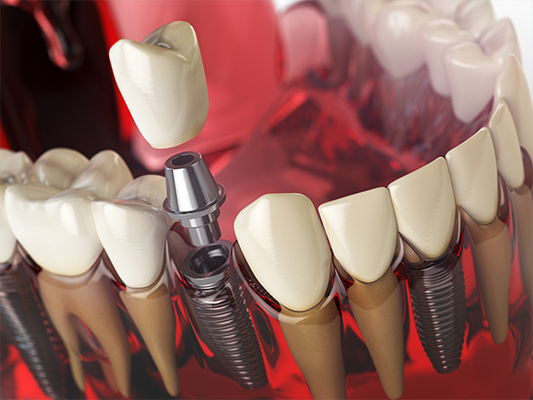Multiple Implants

If you are missing a number of adjacent teeth they may either be replaced with individual implants (one for each missing tooth), or by joining two or more implants together. This latter option can make implant treatment more affordable when patients are missing many teeth.
The importance of replacing missing back teeth (your molar teeth) cannot be over-emphasised as these are the large multi-rooted teeth that are designed to do the main work of chewing your food. They are your grinding and crunching teeth – the power-houses of your bite!
When molar teeth have been lost all of this chewing workload gets transferred to the single-rooted teeth at the front of your mouth (your food has to be chewed by something!) These front teeth are simply not designed to grind and crunch food in the way your molar teeth are and these excess stresses on your front teeth will inevitably cause damage in the long-term.
Problems
More than one tooth missing or failing
- Dislike wearing a denture or have a failing bridge
- Unable to chew properly and eat what you want with confidence
- Not enough teeth to support a bridge
- Do not want teeth damaged by a bridge
Solutions
Implants supporting teeth
- Ideal long term solution that looks, feels and functions just like natural teeth
- Fixed in place, no need to remove them to clean
- No need to damage adjacent healthy teeth
- Very high success rate (99%)
Alternatives
Bridge supported on teeth
- Supporting teeth need to be drilled to attach the bridge thereby shortening their lifespan
- Bone supporting the gum beneath a bridge will shrink due to lack of use leaving a gap
Partial Denture
- Can be loose and uncomfortable, trapping food beneath whilst eating
- Replacement required every few years as dentures become looser
Leave a gap
- Unsightly and embarrassing
- May impair eating and speech
- Positions of surrounding teeth will distort over time
